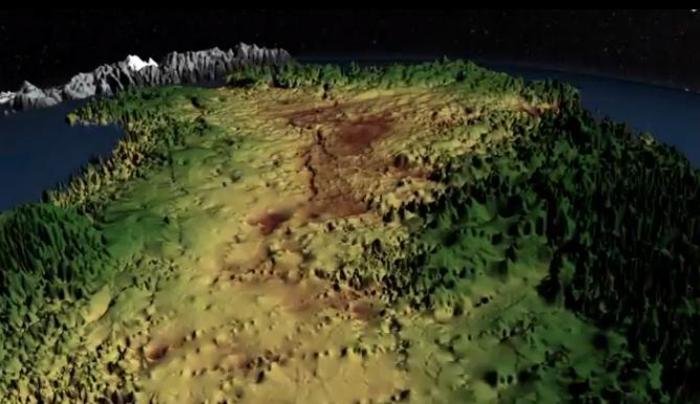Hidden for all of human history, a 460 mile long canyon has been discovered below Greenland's ice sheet. Credit: Image courtesy of NASA
GREENBELT, Md., Aug. 29 (UPI) -- NASA says airborne science missions reveal the existence of a previously unknown canyon, longer than the Grand Canyon, hidden under a mile of Greenland ice.
A study led by researchers at Britain's University of Bristol used radar data collected by NASA and researchers from the United Kingdom and Germany over several decades to piece together the landscape lying under the Greenland ice sheet, the space agency reported Wednesday.
The radar data revealed the canyon, with characteristics of a winding river channel, at least 460 miles long and as deep as 2,600 feet in some places, putting in a on a scale with segments of the Grand Canyon.
The immense geographical feature is thought to predate the ice sheet that has covered Greenland for the last few million years, the researchers said.
"One might assume that the landscape of the Earth has been fully explored and mapped," Bristol physical geographer Jonathan Bamber said. "Our research shows there's still a lot left to discover."
The bedrock canyon seen in the radar data extends from almost the center of the island and ends beneath the Petermann Glacier fjord in northern Greenland, researchers said.
Before the presence of the ice sheet, as much as 4 million years ago, water would have flowed in the canyon from the interior to the coast, creating a major river system, they said.
"It is quite remarkable that a channel the size of the Grand Canyon is discovered in the 21st century below the Greenland ice sheet," said NASA scientist Michael Studinger of the agency's airborne Operation IceBridge, which studies land and sea ice. "It shows how little we still know about the bedrock below large continental ice sheets."















